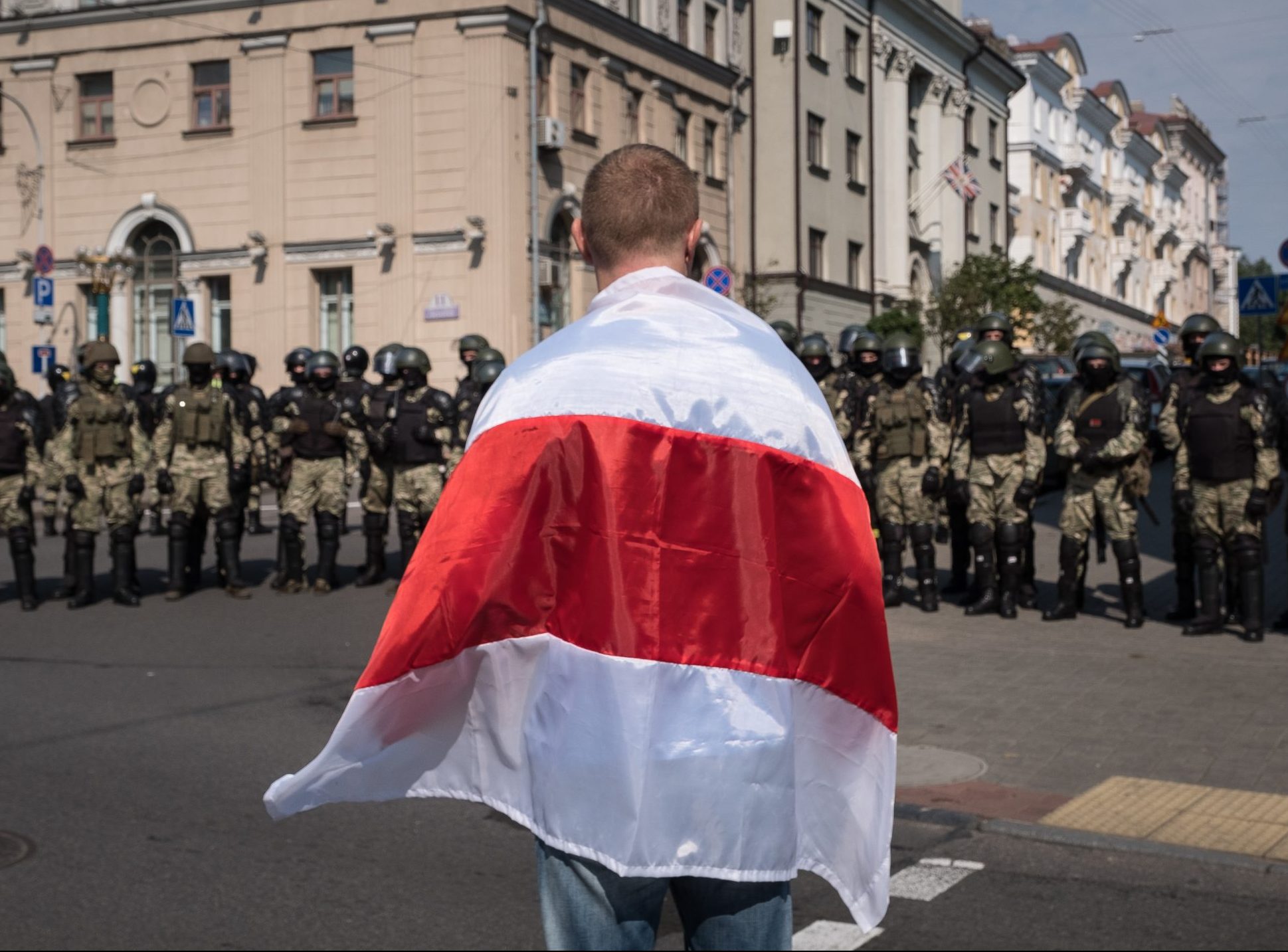Agribusiness Global, Ohio (EUA) – 1.6.2022
Brazil: A Growing Agribusiness Giant
Javier Chavarro
The agrochemical market in Brazil was valued at US $13.5 billion in 2019. By 2020, the value for crop protection products dropped to US $12.1 billion, a decrease of 10.4%. For the year 2021, the National Union of Vegetal Defense Products Industry (SINDIVEG), calculated agrochemicals will have a turnover in the country of around US $13.3 billion, a 9.9% increase over 2020.
This represents approximately 536,000 tons of agrochemical products to be applied in Brazilian fields, according to the Brazilian Association of the Chemical Industry (ABIQUIM). In 2021, 499 registrations were obtained, the highest number of products registered by the Ministry of Agriculture, Livestock and Supply (MAPA) in Brazil in recent years.
![https://d6kq167ddwbdq.cloudfront.net/farmchemint/wp-content/uploads/2022/04/Brazil-Pesticide-Registrations-Chart.jpg]()
Registrations granted by the Ministry of Agriculture, Livestock and Supply (MAPA) in Brazil from 2000-2021.
Among the new registrations, six were new technical products based on the following active ingredients registered in the year 2021.
![https://d6kq167ddwbdq.cloudfront.net/farmchemint/wp-content/uploads/2022/04/Top-6-AIs-Table-Brazil.jpg]()
Seven of the new registered products had a formulation based on a new active ingredient. The following are the new formulated products registered also in the year 2021.
![https://d6kq167ddwbdq.cloudfront.net/farmchemint/wp-content/uploads/2022/04/Top-Brands-Table-Brazil.jpg]()
The registrations of 499 crop protection products approved by MAPA in 2021, became a turning point in the historical series of approvals with 16 registrations between technical product, 77 biological, 243 formulated chemicals, of which 470 (94%) are post-patent. Approvals have been increasing since 2016, when there was an opportunity to register only for 277 products (MAPA). In the MAPA chart, it shows records obtained since 2015.
![https://d6kq167ddwbdq.cloudfront.net/farmchemint/wp-content/uploads/2022/04/Pesticide-Registration-Summary.jpg]()
According to SINDIVEG, the agrochemicals applied in Brazil are divided into four categories according to how they are used. Herbicides have the largest share of the market, followed by insecticides, fungicides, and other products.
The highest proportion of agricultural pesticides applied in Brazil, about 81%, is used for soybean, corn, sugar cane, and cotton crops, according to SINDIVEG.
This growth in products used as agricultural pesticides goes together with the impressive growth of the planted areas in the country. According to Companhia Nacional de Abastecimento / National Supply Company (CONAB), in 2020-21, a little more than 69 million hectares were planted, growth of 4.6% in the planted area from the prior year. For the 2021-22 season, the forecast made by CONAB in December 2021 is 72 million hectares, which indicates a growth of 4.3% in total planted area; confirmed in the evaluation done by CONAB in April 2022 with a value of 72.7 million hectares, growing 4.4% over last year.
These increases in 2021-22 occurred mainly in soybeans going from 39.2 million hectares to 40.7 million hectares, and corn with a growth of 6.5%, going from 19.9 million hectares to 21.1 million hectares. These two crops account for 62 million hectares, which represents 85% of the planted area.
![https://d6kq167ddwbdq.cloudfront.net/farmchemint/wp-content/uploads/2022/04/Brazil-Crops-Table2.jpg]()
With reference to the estimated production of grains in Brazil, the bet is even higher. It is expected that for the 2021-22 season that grain production will be approximately 269.3 million tons, up 5.4% over last season, which was 255.5 million tons. Most of the volume is concentrated in soy and corn production, which represent 88.4% of the total production in Brazil.
![https://d6kq167ddwbdq.cloudfront.net/farmchemint/wp-content/uploads/2022/04/Brazil-Crops-Table.jpg]()
With respect to agrochemical products and according to ABIQUIM, the future of the national chemical industry passes through regulatory stability, commercial defense, legal security, infrastructure, and competitive access to raw materials and supplies.
ABIQUIM indicated that Brazil imported US $6.4 billion in chemical products in November 2021. The unprecedented value represents increases of 4.3% compared to October (a monthly record, until then) and a massive 65% increase compared to November 2020.
In regards to the imports of nearly 6.2 million tons (increases of 0.7% compared to October and 17.1% compared to the same month last year), it is also a record, and confirms the stabilization trend of foreign purchases to an alarming new level of products that could be manufactured in the country, if competitive conditions were more favorable.
The value of Brazilian pesticide imports from January to August 2021 was lower by 22.3% compared to the same period in 2020.
ABIQUIM noted that through November, imported chemical products totaled US $55 billion, an increase of 45.6% compared to the same period last year.
For Ciro Marino, General Director of ABIQUIM, the results of the trade balance of chemical products are at the same time discouraging, since they show the high level of external dependence on critical products for the sustainable development of the national economic activity (industrial uses) and for the country itself, such as fertilizers and pesticides.
One point that significantly affects the development of Brazilian agriculture, as it did in 2021, is the shortage of inputs in the country. It is important to note that the soybean planting in Brazil began in mid-October of 2021, developing slowly due to drought. During this time the need for inputs is quite high, as crops obviously require a critical time for their application.
Data from the Foreign Trade Secretariat (SECEX) of the Brazilian Ministry of Economy reveal that the phytosanitary products formulated are mainly from the United States, China, and India. By volume, China accounted for 32% of the total in 2020, ahead of the United States and India with 11% each.
According to the Brazilian Association of Post-Patent Defensives (AENDA), in a study by IBAMA and Phillips McDougall Consulting, the active ingredients most used in Brazil in their order of importance by business class:
- Herbicides: glyphosate, 2,4-D, atrazine, paraquat, diuron, s-metolachlor, mesotrione, acetochlor, dicamba, and sulfentrazone
- Fungicides: mancozeb, copper-based compounds, sulfur, pyraclostrobin, azoxystrobin, prothioconazole, fluxapiroxade, tebuconazole, and epoxiconazole
- Insecticides: acefate, imidacloprid, and bifenthrin
In terms of supply of raw materials and formulated products, China is a key supplier of raw materials for formulating agrochemicals in Brazil, in addition to formulated products imported from there.
Recent decisions by the Chinese government on the environment have the potential to bring very positive results to global climatic conditions.
However, they generate strong short-term uncertainties regarding the delivery time and costs of products.
The shortage of agricultural chemicals due to current situations and high prices may affect the 2022 growing season, because the coal shortage and power cuts in China have also affected the supply chain for agrochemicals and fertilizers.
China’s energy policy will affect the supply and price of agrochemical intermediaries and active ingredients, as the impact on factories in Yunnan and Jiangsu provinces, where yellow phosphorus production serves as a feedstock for glyphosate, acetate, and malathion.
The situation affects to a greater extent the price of glyphosate, its intermediaries and raw material such as glycine, since its extraction requires a lot of energy. There has already been an increase in the price of glyphosate. (The price of technical material in Brazil doubled as of September 2021).
On the other hand, American farmers are already preparing for less herbicide availability in 2022.
Glyphosate and glufosinate are the two main active ingredients that may potentially be in short supply for the upcoming growing season. And as indicated, China is also an essential source of raw materials and intermediaries for the formulation of agricultural pesticides. The increase in the prices of precursors has a cascading effect on other manufacturing countries, and the impact will be felt by nearly all Latin America, which is a net importer of pesticides.
According to IBAMA, 72% of the active ingredients in agricultural pesticides marketed in Brazil are imported, either formulated or in the form of technical products to be formulated in the country.
Another point that must be considered are the impacts of the lack of containers that have not yet been normalized.
An important element that requires all the consideration that affects the commercialization of agrochemicals in Brazil is the threat of the illegal market of agricultural pesticides. The Institute for Border Economic and Social Development (IDESF) carried out the study, “The Illegal Market of Agricultural Defenses in Brazil,” where it is indicated that the illegalities of the market are characterized by theft, counterfeiting, smuggling, and deviation of the purpose of use. The most smuggled products in Brazil are emamectin benzoate, thiamethoxam, and paraquat, in addition to many others.
However, it appears that more pesticides are being smuggled from neighboring Paraguay, where regulations on these products are much more relaxed.
In the report by IDESF, it is estimated that 25% of the pesticides sold in Brazil are of illegal origin and 30% of the seeds have an unknown origin.
According to the National Association of Agricultural and Veterinary Supplies Distributors (ANDAV), distribution issues reach the field with knowledge, technologies, and innovation, approximately 50% of all inputs that arrive today in the Brazilian field go through a distributor, and ANDAV has grouped more than 2,000 distributors nationwide for more than 30 years.
How does the war between Russia and Ukraine affect agricultural businesses in Brazil?
The impact on agricultural business in Brazil is important, since it imports about 85% of its fertilizer needs with Russia as the main supplier of fertilizers to Brazil.
One of the main inputs for agricultural production are the fertilizers that Brazil imports from different countries globally, and 80% of the flow of fertilizers comes from ten countries, among which are the Russian Federation, Morocco, Canada, the United States, China, Belarus, Qatar, Israel, Algeria, and Saudi Arabia.
The flow of fertilizers to Brazil indicates that it has a 13% share in the global fertilizer trade of a total of US $64.8 billion and that the Russian Federation is the main supplier of potassium fertilizers, nitrogenous fertilizers, and mixed fertilizers for an approximate value of US $1.7 billion that correspond to 20% of the fertilizers that Brazil buys during the year 2020, Brazil imported fertilizers from more than 60 different countries with a value of US $8.5 billion (according to resourcetrade.com). The export of fertilizers to Brazil is led by the Russian Federation, from which 20% is imported according to the portals of The Observatory of Economic Complexity (OEC) and Chatham House, The Royal Institute of International Affairs; followed by Morocco with 11%, Canada with 9.7% and the United States with 8%. Being 10 countries that export 80% of the fertilizers to Brazil.
These are the fertilizers imported to Brazil: 32.3% mixed, 31.8% potassium, 31.7% nitrogen, 3.9% phosphate, and 0.2% organic.
![https://d6kq167ddwbdq.cloudfront.net/farmchemint/wp-content/uploads/2022/04/Types-of-Fertilizers-Imported-By-Brazil-Chart.jpg]()
On the other hand, Brazil exports 0.73% to Russia of its total export volume, which corresponds to US $1.6 billion, represented mainly in the following products: soybeans, walnuts, coffee, sugar, and tobacco among others that represent almost 50% of exports to Russia.
According to the Brazilian Agency of the Brazilian Communication Company, to manage this situation of importing fertilizers, Brazil launched the “National Fertilizer Plan” since the country depends on imported nitrogen, phosphorus, and potassium. According to the Minister of Agriculture, Livestock and Supply, food security is a matter of national security, and fertilizers play an important role in avoiding a food crisis.

